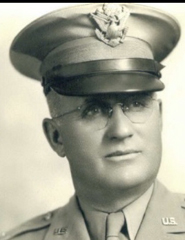34TH DIVISION MADE HISTORY
Story OF Many Stirring Battles Is Recalled
By FRANK MILES
(Iowa Daily Press War Correspondent)
With the Fifth Army in Italy (IDPA) -- "Once there were 3,400 Iowans and they could fight like hell."
Thus, The Stars and Stripes opened a story on the 168th infantry of the 34th division, 5th army from advanced allied force headquarters.
"Starting on Nov. 8, 1942, at Algiers, they fought at Sened, Faid Pass and Fonduk; at Mateur, Hill 609 and Bizerte," and the account continued. "They fought for 38 straight days and when they weren't fighting, striving always for perfection.
"Then they came to Italy, and during the 103 combat days between Sept. 21, 1943, and July 28, 1944, front Paestum to the Arno river, they fought some more, spearheading every 5th army drive from the first crossing of the Volturno on up.
"By now there were 437 of the original Iowans left in the unit - 6 officers and 421 enlisted men - who remember the 168th regiment that came overseas with the 34th division in February of 1942. But those 437 with selective service replacements from every part of the United States are still keeping alive the glory of the 168th, even in the approaches to the Gothic line in the final phases of the bloody Italian campaign."
The 2nd battalion of the 168th officially was credited with the capturing of Hill 609 after a blazing battle in which it suffered severe losses.
The 168th crossed the Volturno in Italy under the terrific fire, with 168 casualties, and pushed on to Calazzo.
The regiment left behind 400 more of its men in 7 days before Cassino. It was the first outfit to cross the Rapido river, quickly wrestling Cairo, Mount Trocchio and Cervaro. It was pinned down 300 yards from the Benedictine Monastery until relieved.
More casualties were suffered at Anzio after weeks of patrolling and defensive action, then the men were engaged in hand-to-hand combat with the nazis at Lanuvio. Tiber crossing followed, then the whirlwind dash north from Rome.
When the 168th was relieved at the Arno July 28th, it had piled up 291 combat days in 20 months of frontline duty. Besides the days spent with the unit in action, 450 Iowans had seen special service with British commandos in the famous raid on Bizerte airport and other behind the lines attacks in Tunisia until the volunteer group rejoined the regiment in March 1943.
Many of the GI's, who marched out to win laurels from the 168th in World war II, were sons of those sterling youths who made the old 168th of 1918 one of the greatest the American army had every known.
It was commanded then, first by Col. T.R. Bennett, now of Des Moines, and by Col. Mat A. Tinley, who became a major general of the 34th division of the national guard, and was retired for age March 4, 1940, a lieutenant general, a rank he now holds in the Iowa state guard.
The 168th, which came to Europe in this war, long was commanded by the late Col. Glenn C. Haynes of Centerville, a captain and major in the outfit in the last war, who died as warden of the state penitentiary at Ft. Madison. It was brought overseas by Col. George F. Everett, of Council Bluffs, now on duty in England.
Lt.Col. De Loss Marken, of Des Moines, senior chaplain of the 34th division, went to Camp Claiborne as chaplain of the regiment. Like him, many others of the 168th have gone to large fields and many have gone to the "Silent Army."
Time and again in roving around the north Italy front, the writer has run across soldiers of the 168th. If one says he is not from Iowa he will quickly tell you it is an Iowa regiment. The old Hawkeye spirit of 1917-18 prevails though few Iowans are now in the outfit.
Source: Mason City Globe-Gazette, October 13, 1944
![]()

